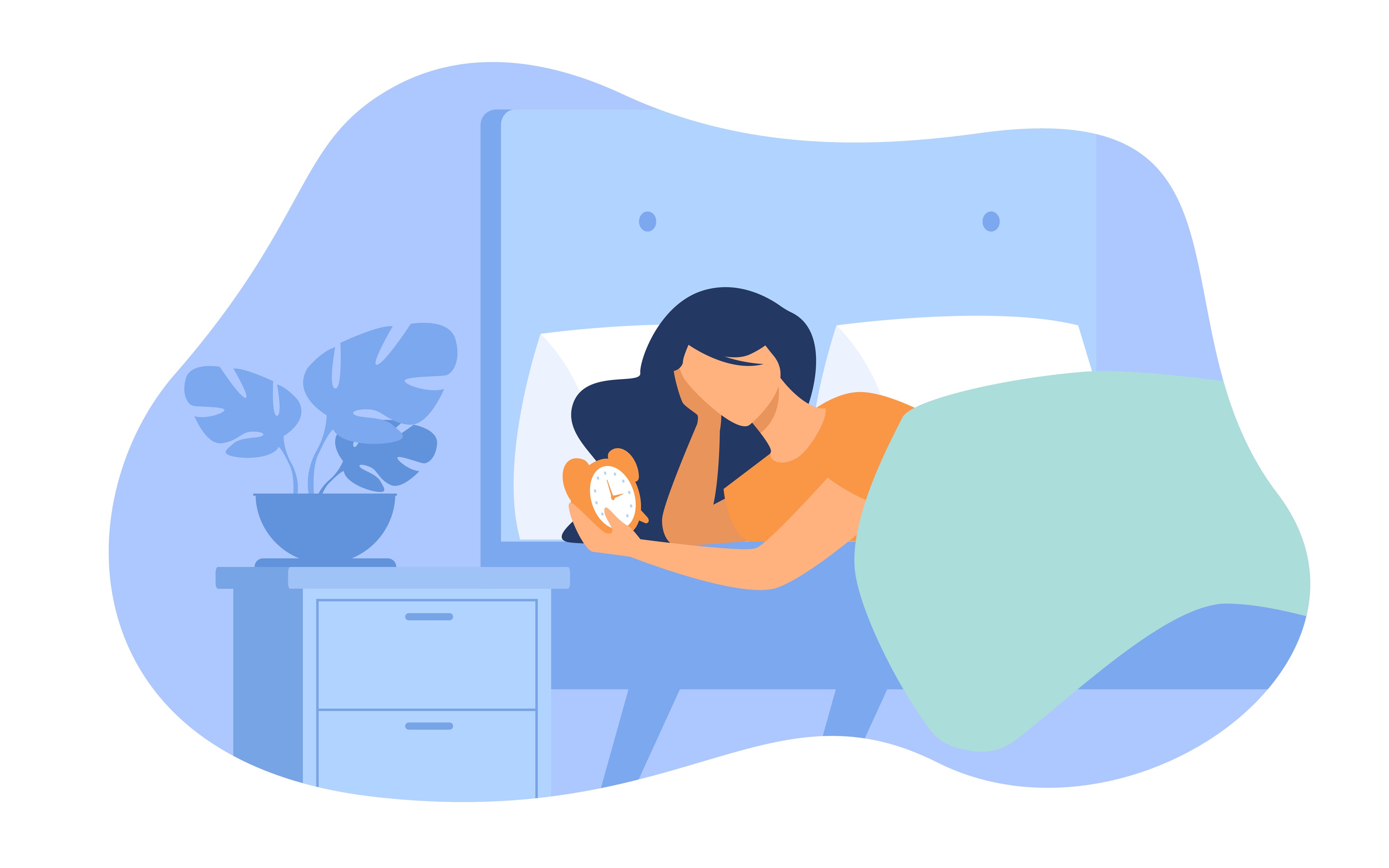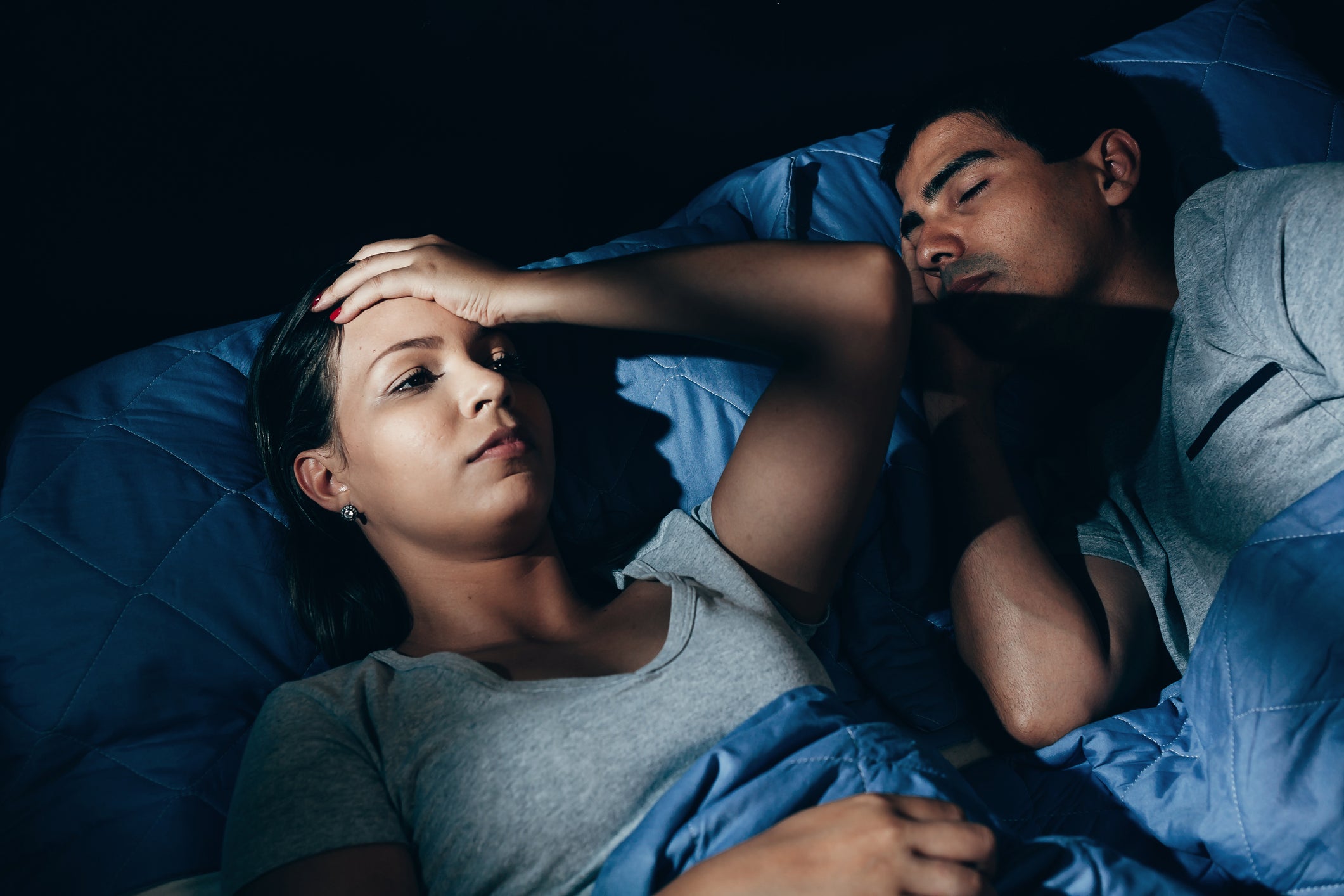The Independent's journalism is supported by our readers. When you purchase through links on our site, we may earn commission.
What is segmented sleep and can it help me?
For many people sleeping can be difficult, but if you’re used to waking up in the middle of the night, why not embrace it? Danielle Braff looks into the pros and cons of segmenting your sleep

Your support helps us to tell the story
From reproductive rights to climate change to Big Tech, The Independent is on the ground when the story is developing. Whether it's investigating the financials of Elon Musk's pro-Trump PAC or producing our latest documentary, 'The A Word', which shines a light on the American women fighting for reproductive rights, we know how important it is to parse out the facts from the messaging.
At such a critical moment in US history, we need reporters on the ground. Your donation allows us to keep sending journalists to speak to both sides of the story.
The Independent is trusted by Americans across the entire political spectrum. And unlike many other quality news outlets, we choose not to lock Americans out of our reporting and analysis with paywalls. We believe quality journalism should be available to everyone, paid for by those who can afford it.
Your support makes all the difference.About a year into the pandemic, Marcela Rafea began waking up consistently at 3am, her mind racing.
She would creep out of bed and tiptoe into the living room, where she would meditate, try a few yoga poses and open the window to hear the leaves rustle, the cars rush by and the dogs bark.
Then, at 6am, she would crawl back into bed and sleep again until her youngest child woke her for the day an hour later.
“I needed that night wakefulness to make up for the time that I didn’t have for myself,” says Rafea, a 50-year-old photographer and mother of three who lives in Oak Park, Illinois.
Unbeknown to Rafea, she had naturally reverted to a sleep cycle that is believed to have been standard in some cultures from the late Middle Ages until the early 19th century.
During that period, people often went to sleep around sundown and woke three to four hours later. They socialised, read books, had small meals, and tried to conceive children for the next hour or two before going back for a second sleep for another three to four hours. It was only when artificial light was introduced that people began forcing themselves to sleep through the night, according to A Roger Ekirch, a professor of history at Virginia Tech and author of The Great Sleep Transformation.
Now that a lot of people are making their own schedules, working from home and focusing more on self-care, there has been a return for some to the idea of a segmented sleep cycle – sometimes voluntary, but given the stress levels of the past two years, sometimes not.
So are we simply reverting to our long-forgotten, natural sleep cycle? And could this be the cure for those deemed middle-of-the-night insomniacs?
The whole anxiety I had about not being able to sleep started to ease, and I started to feel like what little sleep I was getting at night was OK as long as I used my wake time more productively
Ekirch, who has studied segmented sleep for the past 35 years, says there are more than 2,000 references to it from literary sources: everything from letters to diaries to court records to newspapers, plays, novels and poetry, and from Homer to Chaucer to Dickens.
“The phenomenon went by different names in different places: first and second sleep, first nap and dead sleep, evening sleep and morning sleep,” says Benjamin Reiss, a professor of English at Emory University and the author of Wild Nights: How Taming Sleep Created Our Restless World. He adds that rather than being a choice at the time, this was simply something that people did, as it fitted in well with agricultural and artisanal patterns of labour.
There were negative reasons for segmented sleep as well.
“Sleeping surfaces – often a sack stuffed with grass, or if you were lucky, wool or horsehair – made it harder than it is today to sleep for a long stretch without interruption,” Reiss says. And there were, of course, health issues. For example, “without modern dentistry, a toothache might start throbbing in the middle of the night”.
Everything changed with the industrial revolution, which placed an emphasis on profit and productivity; the belief was that people who confined their sleep to a single interval gained an advantage. The growing prevalence of artificial light permitted later bedtimes, leading to sleep compression.
Fast forward a few hundred years, and we’ve grown accustomed to compressed sleep. Well, some of us have.
Thirty percent of people report waking up at least three nights per week, according to one study published in 2010 in the Journal of Psychosomatic Research, and 25 per cent of adults suffer from insomnia each year, according to a recent study by researchers at the University of Pennsylvania. For some people, the pandemic has spurred more flexible schedules, and this has led to experiments with the old-fashioned sleep method.

That’s the case for Mark Hadley, a 52-year-old finance manager in North Bend, Oregon. In the past 20 years, Hadley says he doesn’t remember a time when he slept completely through the night.
“I always woke up halfway through the night and just lay there,” he says. “Physically, I wanted to get up, but I needed more sleep.”
Hadley didn’t have a choice. He had heard of segmented sleep, but didn’t have time to try it out until his job went mainly remote during the pandemic.
So in August 2021, Hadley started segmented sleeping, going to bed at 10pm and waking up naturally at 2am. He gets up for one and a half to two hours to read and to pray. Then he goes back to bed around 3.30 or 4am, and sleeps until his wife wakes him at 6.30 or 7am.
“This is what my body was trying to do, even when I had never heard of it,” Hadley says. “I finally got to a place where I have a healthy sleep pattern.”
Doctors are conflicted about how healthy segmented sleep is, however.
“We don’t really know the long-term impacts of segmented sleep because we don’t really have much data on it,” says Matthew Ebben, an associate professor of psychology in clinical neurology at Weill Cornell Medicine and NewYork-Presbyterian.
When practising segmented sleep, insomniacs don’t have to worry about waking up in the middle of the night, as that’s the way segmented sleep works
It may make some people feel more fatigued and drowsy throughout the day, says Nicole Avena, a health psychologist and assistant professor of neuroscience at Mount Sinai School of Medicine. Also, Avena says, segmented sleep requires individuals to go to bed earlier, which may not work with some schedules.
For Danielle Hughes, 33, segmented sleep proved a remedy for insomnia. Hughes, who lives in Dublin, spent an entire year visiting doctors to try to find a solution for her middle-of-the-night awakenings. She finally googled her issue and stumbled upon the idea of segmented sleep.
“It was like a lightbulb moment for me,” Hughes says. “The whole anxiety I had about not being able to sleep started to ease, and I started to feel like what little sleep I was getting at night was OK as long as I used my wake time more productively.”
Since she found out about segmented sleep, Hughes has been more open to this concept, sleeping from 2am to 6am and again from 2pm to 6pm.
In cases of anxiety around insomnia, segmented sleep is often an ideal solution, says Alex Savy, a sleep science coach and founder of SleepingOcean, a sleep product review site in Toronto.
“When practising segmented sleep, insomniacs don’t have to worry about waking up in the middle of the night, as that’s the way segmented sleep works,” Savy says. “Therefore, they can adjust the schedule to their insomnia and reduce the stress associated with it.”
But returning to sleep patterns from the Middle Ages isn’t for everyone, Avena says, suggesting that segmented sleep should be tried only by those who are already having sleep issues.
“I think that while it may promote better sleep for these individuals, it probably has more consequences than benefits for those who do not have a hard time sleeping,” she says.
This article originally appeared in The New York Times




Join our commenting forum
Join thought-provoking conversations, follow other Independent readers and see their replies
Comments